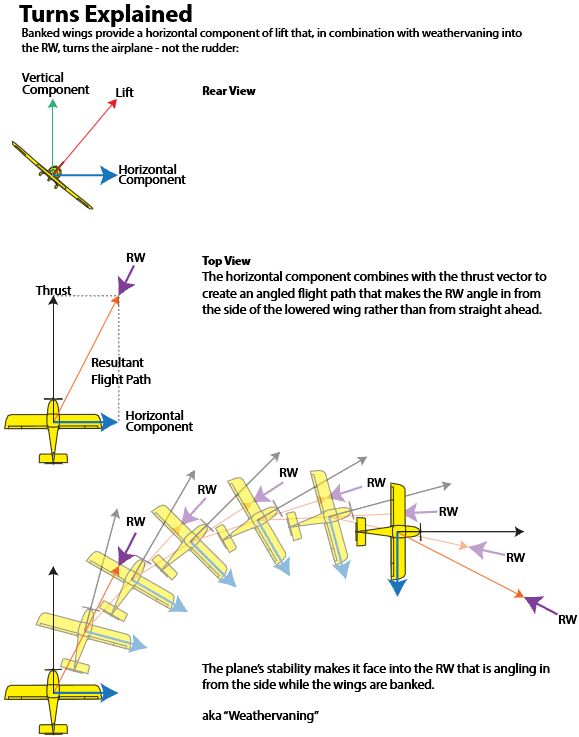redtail
En-Route
- Joined
- Aug 23, 2011
- Messages
- 4,408
- Location
- 93 million miles from the sun
- Display Name
Display name:
Redtail
Actually, that's probably what confuses people. It doesn't 'explain' why an airplane changes heading. It might be intuitive for some, but there's a better way. As Wolfgang Langwiesche states on page 198 in his book Stick and Rudder,
"An airplane is turned by laying it over on its side and lifting it around through back pressure on the elevator."The key, as he illustrates with a drawing, is the continual action of the horizontal tail surfaces, much like the feathers of an arrow or as a weather vane, to maintain the selected angle of attack, resulting in curving flight.
dtuuri
So we can blame Stick and Rudder for confusing things because it doesn't mention how the airplane gets layed over on its side, or the fact that the airplane would still turn without additional elevator input.
and from "STICK and RUDDER" page 202:
"But why back pressure on the stick? The back pressure on the stick is not necessary in order to get a turn; it is necessary only in order to get a good turn and to avoid a loss of altitude during the turn"
HAPPY NEW YEARS Y'ALL
Last edited:





